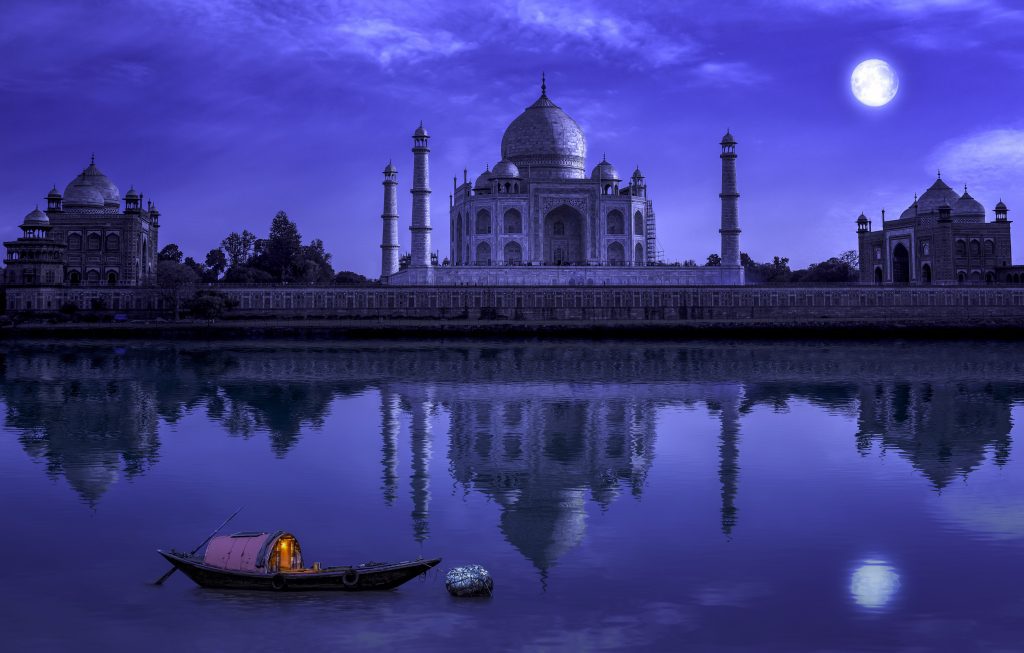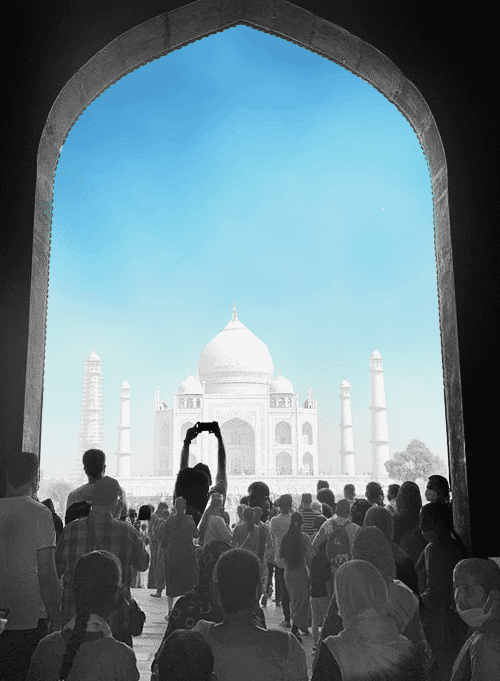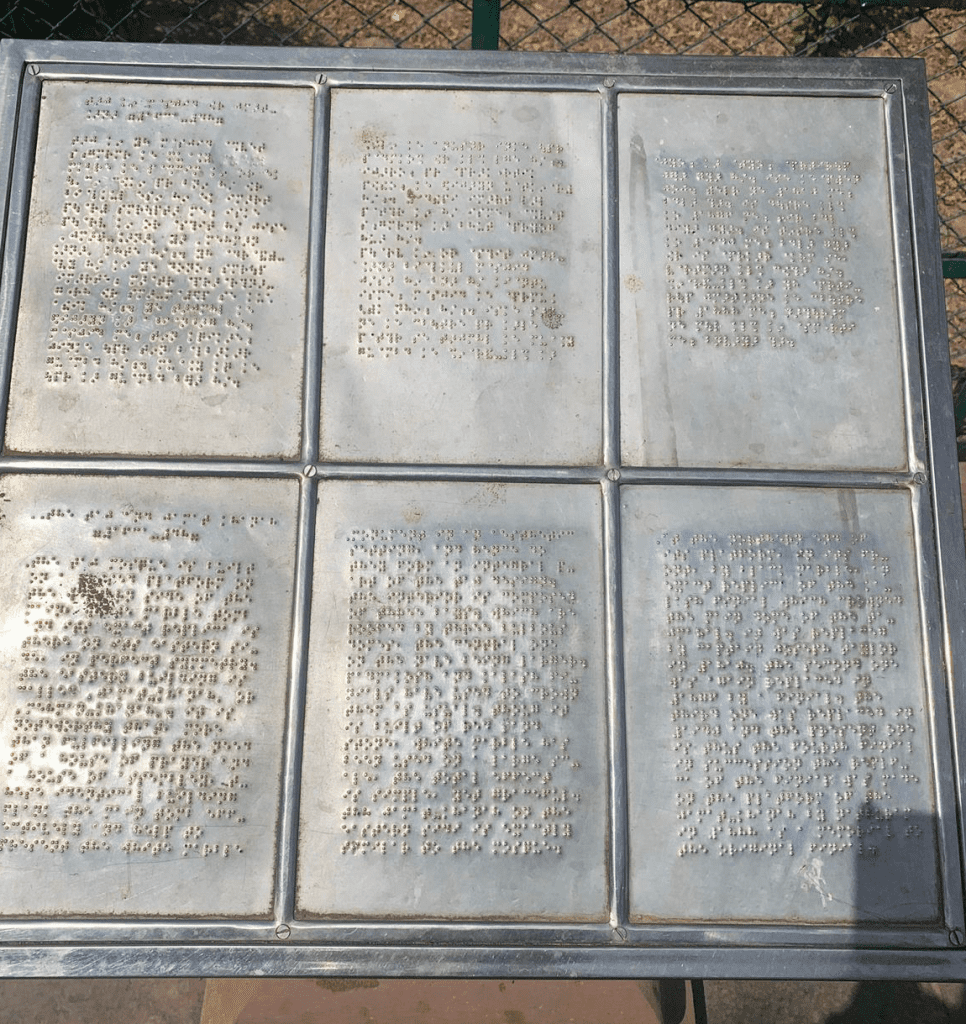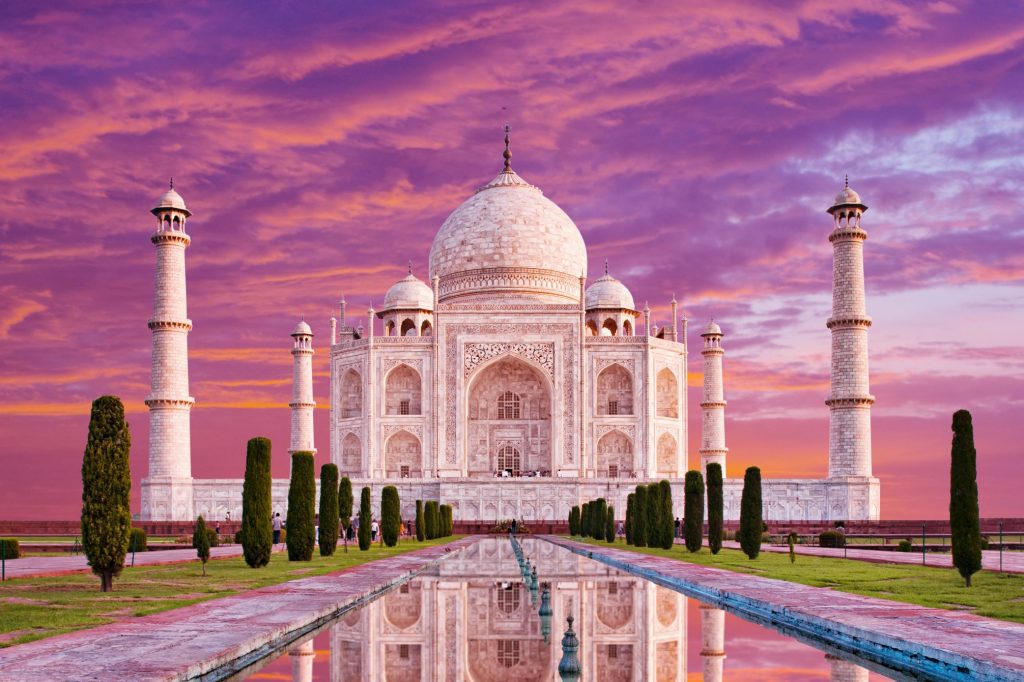Skift Take
The Taj Mahal is many things to many people. However, some sectors in India are now keen to rewrite the monument's history. Already beset by problems of overcrowding, pollution, apathy and infrastructure, the Taj can do with some rewriting of its present, not its past, to secure its future. Much of India's tourism trade is riding on it.
What’s pink in the morning, milky white in the evening and golden under the moon? A few decades ago, this wouldn’t have been too hard to guess for India-returned tourists.
But the Taj Mahal these days finds itself embroiled in controversy, which takes off from an old theory of the Taj Mahal originally being a Hindu temple. The Taj Mahal was commissioned to be built by a Muslim emperor in the 17th century, so it underscores India’s polarization between Hindus and Muslims.
In May, a petition was filed by one Rajneesh Singh, said to be the “media in-charge” of the ruling Hindu nationalist party Bharatiya Janta Party’s Ayodhya unit, seeking an inquiry from a fact-finding panel into the “real history” of the monument. The petitioner also urged the opening of the 22 sealed rooms, for the possible presence of idols of Hindu gods inside.
The Taj Mahal, one of the Seven Wonders of the World, is not just the Indian monument most visited by international visitors, it is also the most frequented attraction when it comes to domestic tourists. In 2019-2020, nearly 4.5 million domestic tourists and 650,000 international tourists visited the Taj.
But the divisive Hindu temple controversy that some see as mix of robust nationalism masked as patriotism is just the latest cloud for the Taj Mahal, raising questions about its future. Inadequate infrastructure, pollution, and growing apathy towards the Taj Mahal, located in Agra, in the northern Indian state of Uttar Pradesh, is taking the shine off the country’s most popular tourist attraction and one of the most storied destinations worldwide. How quickly these issues can be addressed has huge implications for tourism across India.
A UNESCO World Heritage Site since 1983, the revenue generated by the monument has gone up by almost 400 percent in the last 5 years. In 2018-2019 the Taj Mahal generated revenue worth $11 million, while maintenance and conservation cost around $700,000.
Already mindful of the growing apathy towards Agra, once said to be the tourism capital of India, this time around the tourism industry isn’t amused. Travel agents said religious controversies such as the latest one would only deter inbound tourists, who have been trickling in, post India’s reopening of borders in March after a two-year lull.
Controversies like this do not create a conducive environment for tourism growth in the country, said Rajiv Saxena, executive director of Sanskriti Vacations India. “Agra has been out of favor with the incumbent state regime, whose focus is more towards religious tourism.”
The state government has instead been promoting Ayodhya and Varanasi more aggressively in Uttar Pradesh lately.

Behind the Latest Controversy
As much as Taj Mahal is symbolic of Indian culture, the iconic monument has also been the hotbed of India’s cultural conflict.
The Mughal-era monument, protected by the Archaeological Survey of India, has had several right-wing outfits claiming it to be Tajo Mahalaya — a Hindu temple in the past. Right-wing historian Purushottam Nagesh Oak in his book “The Taj Mahal is a Hindu Palace” claimed that the monument was originally a Shiva temple built by a Rajput ruler.
Tellingly, the titles of Oak’s other works include “Delhi’s Red Fort is Hindu Lalkot, “Lucknow’s Imambaras are Hindu Palaces,” and “The Agra Red Fort was a Hindu Palace.”
Although Rajneesh Singh’s petition in May this year was quashed by the Allahabad High Court, right-wing activists aren’t convinced. Singh had also sought permission to see documents related to the sale of the Taj Mahal land by Rajput king Raja Jai Singh to Shah Jahan.
The Archaeological Survey of India had also released pictures of the cells, maintaining that there is no secret and that these rooms contain several Mughal-era mausoleums.
“Such sentiments are always around in India especially as the country prepares for the general elections in 2024. Of course, with the Taj Mahal being an iconic monument the mileage that one can draw from it will be bigger,” said Mahatim Singh, general manager of Touraids (India) Travel Service.
Incomplete Projects Around Taj
Even projects relating to development in and around the Taj Mahal have been delayed, added Saxena, who is also the vice-president of Tourism Guild of Agra. “The Taj Mahal Eastern Gate Parking lies incomplete,” Saxena said, citing an example. Closest to some of the prominent hotels in Agra city, the East Gate is mainly used by foreign visitors.
Expected to have been completed much before Covid, the Shivaji Museum, earlier known as Taj Museum, also lies incomplete. “Apparently there’s no money to complete it now,” Saxena said.
“Moreover, no new projects have been sanctioned in Agra in terms of promotion and development of tourism. It wouldn’t be an exaggeration to say that Taj Mahal drives the tourism to the entire sub-continent.”
The travel community in Agra has been knocking on the doors of every politician requesting them to build tourism infrastructure in Agra, Touraids’ Singh said. “With pressure being built, I hope these projects will be realised.”
While acknowledging that Agra is not currently on the government’s priority list, Singh cautioned, “If you want people to travel to India you cannot continue the apathy towards Taj Mahal at any cost.”
Even with little or no promotion being done by the government, travelers are still keen to visit the Taj Mahal. “We already have 10-12 charters coming in from the U.S. to Agra in September,” Singh said.
The Fading of Taj’s Color and Glory
Constructed out of translucent white marble, sourced from the Makrana Mines of Jaipur in Rajasthan, adorned with delicate inlay work and carvings — the mesmerising monument is today a pale shadow of its erstwhile regal glory.

The rising air pollution levels in Agra have greatly affected the color of the Taj. In response to a public interest litigation seeking to protect the Taj Mahal from environmental pollution, India’s highest court, the Supreme Court, had in a 1996 ruling mandated the creation of a “safe” zone to protect the monument from pollution.
The Taj Trapezium Zone is a designated area of 10,400 sq km surrounding the Taj Mahal, around which the court has banned the use of coal/ coke by industries, with a mandate to switch to natural gas, and relocate the plants or shut down.
This has had scant impact on the pollution levels in the city in general as Agra ranked the 36th most polluted city in the world in 2021.
In 2018, the Supreme Court pulled up the Bharatiya Janta Party-led Indian government for not taking necessary measures to preserve and protect the Taj. “We don’t know whether you have or perhaps don’t have the expertise. Even if you have the expertise, you are not utilising it. Or perhaps you don’t care,” the bench told the government.
“The Taj Mahal is on the banks of the river Yamuna and the river is drying. For the monument to survive, it is essential that there is water in the Yamuna. There must be a reason why the Yamuna was very much a part of the planning when the Taj Mahal was being built,” said Sanjay Sharma, president of the Tour Guides Federation of India.
“While there have been talks of creating a barrage or dam on the Yamuna a little more than a km away from the Taj Mahal, not much work has been done towards this,” he added.
In 2021, findings from a paper titled, “Role of Air Pollutant for Deterioration of Taj Mahal by Identifying Corrosion Products on Surface of Metals,” stated that the hydrogen sulphide from the polluted Yamuna River is responsible for damaging the monument in more ways than one.
To ascertain the possible effects of the pollutants, samples of zinc, copper and iron were exposed for four years at the premise of Taj Mahal, said Achal Pandya, head of the conservation unit at Indira Gandhi National Center for Arts, one of the five co-authors of the paper.
“We then studied the deposits on these metals with various techniques, including Raman spectroscopy. The studies revealed the formation of respective sulphides of the studied metals,” said Pandya.
This observation as well as identification of corrosion products formed on the metal surface (strong peaks of copper sulphide) provided strong evidences that the hydrogen sulphide evolved from the polluted river accelerated the deterioration of the metal.
The study can be further developed by placing these metal samples at different heights in the Taj Mahal that stands at 73 meters to ascertain the level to which the sulphide rises, added Pandya.
“There should be enough clean water flowing in the Yamuna,” he said.
What About Overcrowding?
Before Covid, clicking a photo of the Taj Mahal without hordes of tourists coming into your frame would have been an impossible feat. Overcrowding is definitely a problem at the Taj, which is visited by 35,000-40,000 visitors daily, with numbers touching 70,000 on weekends, according to the Archaeological Survey of India.
To counter this overcrowding, the government had suggested in 2019 that visits would be limited to only three hours, beyond which tourists will have to pay additional fees equal to the cost of the ticket. Also, domestic tourists who earlier paid less than $1 as entry fees would have to pay an additional $2.50 to enter the mausoleum, while foreign tourists pay $16 to secure entry into the mausoleum.
Taj Mahal is also notorious for its “tout culture.” “The worst thing to happen to the Taj Mahal is that there are more than 5,000 touts operating as unauthorized guides in and around Agra. Compared to that, the city only has 1,000 guides licensed by the ministry of tourism and the state government,” Sharma said.
The number of approved guides reaching 1,000 has also been possible only recently, after the government added close to 500 more guides for domestic tourists, he added. “The touts have indeed impacted Agra tourism negatively. They win the trust of unsuspecting tourists and take them to over-priced shops where a fat commission is guaranteed. And when the tourists realise that they have been scammed, they leave scathing reviews of the destination,” Sharma said.

A Monument of Inclusivity
While there may not be much proof to establish claims that the Taj Mahal was allegedly a Hindu temple, the monument has always been a symbol of inclusivity and secularism.
Commissioned by Mughal emperor Shah Jahan to commemorate the death of his second wife Mumtaz Mahal, Taj Mahal incorporates and expands on many Hindu, Ottoman and Mughal design traditions.
It is also one of the few monuments in the country that are disabled-friendly, with multiple ramps to make the Taj Mahal campus accessible for wheelchair users. The credit for this goes to Stephen Hawking.
In 2001, when Hawking visited India, he had expressed his wish to visit Taj Mahal, Humayun’s Tomb, Qutub Minar and a few other well-known monuments. This is what led to these monuments turning wheelchair-friendly, even as Hawking left without visiting the Taj.
The Taj Mahal is also one of the very few monuments in the country accessible to visually impaired tourists, who can read the history of the monument through a notice board in Braille script, available in both Hindi and English.

A Trip to India Incomplete Without a Taj Visit
The Taj is to India what the Great Wall is to China, Big Ben is to London, and the Colosseum or Trevi Fountain is to Rome.
From Putin to Oprah, every foreign head of state or celebrity visiting India has posed on the famed marble bench with the Taj Mahal in the background.
This is an iconic site and we cannot do without the Taj, said Dipak Deva. managing director of Travel Corporation of India, India’s largest inbound travel company.
“It’s on the must-do list of every foreign tourist who visits India for the first time. Indian tourism is dependent on Taj Mahal and people come to India because they recognize this site. People don’t care about religion and politics when they come to visit a place like this,” Deva said.
The Taj Mahal is one of the most sought-after monuments on every traveler’s bucket list. Almost all Abercrombie & Kent guests visiting North India have Taj Mahal included in the itinerary, and they visit the monument twice — at sunrise and sunset, said Vikram Madhok, managing director of Abercrombie & Kent India.
“Abercrombie & Kent USA recently operated an exclusive 24-day tour round the world by private jet and offered special curated experiences. In India, our jet touched down in Agra and guests stayed for two nights at The Oberoi Amarvilas. The group visited the Taj Mahal twice,” he said.
While Madhok acknowledges that there has been no adverse impact on business due to pollution and infrastructural challenges at Taj Mahal and 2019 was, in fact, one of the best years of growth, he said there is a growing concern about the impact due to pollution and infrastructure.
Taj Mahal is not just a must-visit for international visitors; it is equally important for domestic tourism, said Sunil Gupta, director of Travel Bureau, a four-decade-old travel company based in Agra.
“Taj Mahal being shown as a controversial monument in terms of its origins will not go down well with tourists, especially if it threatens their security,” added Gupta.
Gupta cautioned that if the situation is not diffused in time and is instead encouraged to gather momentum, it will have a negative effect on tourism in India. “This would be devastating for the tourism industry that has barely welcomed any foreign visitors in 2020 and 2021,” he said.
The Golden Triangle, a very popular circuit for foreign tourists visiting India, comprises a tour of Delhi, Agra and Jaipur. “Agra is an unbreakable link to the Golden Triangle,” said Subhash Goyal, chairman of STIC Travel.
What’s Needed for a Better Experience?
Even though the booking of entry tickets for the Taj Mahal is finally possible online, tickets cannot be booked for more than one week in advance.
“The tourism industry has also been calling for combined entry tickets wherein tourists are allowed to visit more than one protected monument by purchasing one entry ticket,” Goyal, who is also a member of the National Tourism Advisory Council of the ministry of tourism, said.
Instead of being led by touts to shops nearby which end up fleecing tourists, a souvenir shop located at the exit of the Taj would be more organized, Goyal noted, adding, “A cafeteria in the Taj vicinity where people could come and relax would be a good idea and would also help to bring in some revenue.”
In many ways, the popularity of the Taj serves as a double-edged sword as challenges like overcrowding, pollution and traffic are a result of millions traveling to the city of Agra to see what the famed monument is all about.
Better amenities and facilities in and around the Taj would go a long way in preserving the monument and ensuring livelihood options for those living around.
“The city of Agra rose to prominence thanks to the Taj Mahal. The monument is also the reason that Uttar Pradesh has found a place in the global tourism map. The Taj Mahal is here to stay. It is India’s pride,” Goyal said.
Perhaps that explains why, of the 31,000 reviews on TripAdvisor, more than 26,000 have still rated the monument ‘Excellent’.
Abercrombie & Kent USA has seen an increase in demand over the past month, particularly for travel in quarter 4 of this year, on its Taj Mahal & the Treasures of India small group journey. “There are several departures now close to being sold out and I am optimistic this trend will continue as we see guests book travel closer in,” said Jennifer Campbell, Abercrombie & Kent USA product manager, Asia.
Many a poet’s muse, an architectural marvel, a tourist’s delight — this monument with a delicate sentiment at its heart, is many things to many people. But one thing it will always be is synonymous with India. So much rides on the enormous potential of the Taj Mahal not being allowed to dry up like the river that flows by it.
Skift India Report
The Skift India Report is your go-to newsletter for all news related to travel, tourism, airlines, and hospitality in India.
Tags: asia monthly, india, india outbound, overcrowding, politics, pollution, tourist attractions, unesco
Photo credit: A mix of pollution, inadequate infrastructure and growing apathy is taking the shine off the Taj Mahal. Elena-studio / Getty Images
